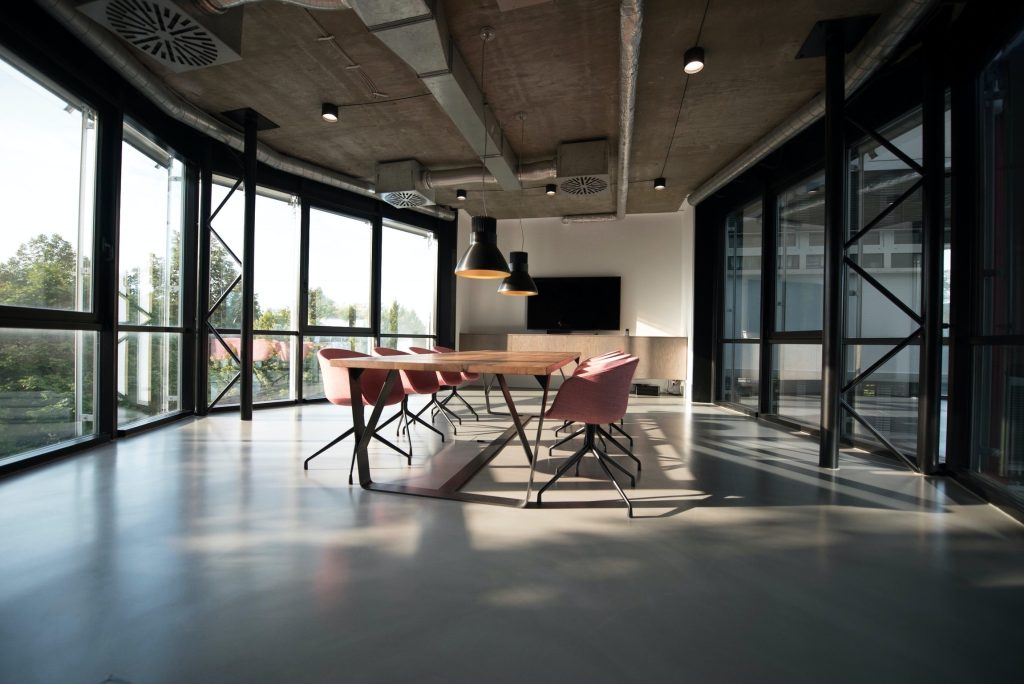10 Things to Consider Before Investing in Commercial Property
Investing in commercial property can be an attractive opportunity for real estate investors seeking a steady stream of income and long-term wealth accumulation. However, before investing your hard-earned capital, it is crucial to consider a range of factors that can significantly impact the success of your investment. Here are ten things to keep in mind before investing in commercial property.
Understanding the Types of Commercial Properties when Investing in Commercial Property
Commercial properties vary in type, and each comes with its unique characteristics and investment strategies. Understanding the different types of commercial properties is essential for anyone looking to invest in real estate. Here are some of the most common types of commercial properties:
Office Buildings
Office buildings are typically multi-story structures designed to accommodate companies and businesses. They are commonly located in central business districts or commercial zones. Due to their high rental rates and long-term lease agreements, they offer stable income streams to investors. Office buildings are usually classified into three categories: Class A, Class B, and Class C. Class A buildings are the most prestigious, with high-quality finishes and amenities, while Class C buildings are the least desirable.
Retail Spaces
Retail spaces are commercial properties designed to house retail outlets and other businesses that engage in direct sales to consumers. They are typically located in shopping malls or standalone shops with high visibility and access to foot traffic. Retail spaces can be further classified into different categories, such as neighborhood centers, community centers, regional malls, and power centers. Each category has its unique characteristics and investment potential.
Industrial Properties
Industrial properties consist of manufacturing plants, warehouses, distribution centers, and other similar properties. These properties typically require specialized infrastructure, such as heavy-duty power systems and large loading docks. Industrial properties can be further classified into different categories, such as flex properties, heavy manufacturing, light assembly, and research and development facilities. Each category has its unique characteristics and investment potential.
Multi-Family Housing
Multi-family housing includes apartments, condos, and townhouses designed to house multiple families or groups. They offer investors the opportunity to diversify their income stream while maintaining a long-term ownership interest in the property. Multi-family housing can be further classified into different categories, such as low-rise, mid-rise, and high-rise buildings. Each category has its unique characteristics and investment potential.
When investing in commercial properties, it’s essential to understand the local real estate market and the demand for each type of property. It’s also crucial to conduct thorough due diligence, including analyzing the property’s financials, physical condition, and tenant mix. Working with a knowledgeable real estate agent or broker can help you navigate the complexities of commercial real estate investing and make informed investment decisions.
Assessing the Location
The location of a commercial property is a critical factor that can significantly impact its investment potential. Here are a few key aspects to keep in mind when considering the location of a commercial property:
Proximity to Amenities
A commercial property located within proximity to amenities such as shopping centers, cultural institutions, and transportation hubs is more likely to attract tenants and maintain a high occupancy rate.
For example, a property located near a popular shopping center can benefit from increased foot traffic and exposure to potential customers. Similarly, a property located near cultural institutions such as museums or theaters can attract tenants in the arts and entertainment industry.
Additionally, a property located near transportation hubs such as train stations or bus stops can make commuting more convenient for tenants, further increasing the appeal of the property.
Transportation and Accessibility
Investors should consider the ease of access to transportation networks such as highways, public transit, and airports. Properties located near major transportation nodes are often more attractive to tenants and can command higher rental rates.
For example, a property located near a major highway interchange can provide easy access for commuters and trucking companies, making it an ideal location for a distribution center or logistics company. Similarly, a property located near a major airport can be attractive to businesses in the travel and tourism industry.
Investors should also consider the accessibility of the property itself. A property with ample parking and easy access to major roads and highways can be more appealing to tenants and customers alike.
Local Market Trends
Investors should carefully analyze the local market conditions, including demographic trends, employment statistics, and local economic indicators. This data can provide insight into how a property may perform over time in a given market.
For example, a property located in an area with a growing population and a strong job market may be more likely to experience high demand from tenants and appreciate in value over time. On the other hand, a property located in an area with a declining population or a struggling local economy may be a riskier investment.
Investors should also consider the competitive landscape in the local market. Properties located in areas with high levels of competition may struggle to attract tenants and maintain high occupancy rates.
By carefully considering these factors, investors can make informed decisions about the location of a commercial property and maximize its investment potential.
Evaluating the Property’s Condition
Before investing in a commercial property, investors should evaluate the current condition of the property. This can help them make informed decisions and avoid costly mistakes. Here are a few key factors to keep in mind:
Structural Integrity
One of the most important factors to consider when evaluating a commercial property is its structural integrity. Investors should commission a professional inspection to determine the soundness of the property’s structure, electrical and plumbing systems, and other infrastructure. This will help avoid serious maintenance issues down the line and ensure that the property is a safe and secure investment.
Structural issues can be expensive to fix, and they can also be a liability if they are not addressed promptly. For example, if a building has a weak foundation, it could collapse in the event of an earthquake or other natural disaster. This could result in serious injuries or even fatalities, as well as significant financial losses for the property owner.
Investors should also consider the age of the property and whether it has been well-maintained over the years. Older buildings may require more frequent repairs and upgrades, which can be costly. However, if a property has been well-maintained, it may be a more reliable investment in the long run.
Maintenance Requirements
Another key factor to consider when evaluating a commercial property is its maintenance requirements. It is crucial to understand the property’s maintenance requirements and ensure that they are feasible and economically viable. The condition of a property plays a significant role in attracting and retaining tenants, enhancing its rental income generation.
Investors should consider the ongoing costs of maintaining the property, such as landscaping, cleaning, and repairs. They should also factor in the cost of any necessary upgrades or renovations to keep the property competitive in the market. Failure to properly maintain a commercial property can lead to decreased occupancy rates, lower rental income, and decreased property value.
Potential for Renovations or Upgrades
Investors should also consider the potential for future renovations or upgrades that may improve the property’s value or income stream. These renovations can be more cost-effective if done at the time of the initial purchase. For example, upgrading the HVAC system or adding energy-efficient lighting can help reduce operating costs and attract tenants who value sustainability.
Renovations can also help improve the overall aesthetic of the property and make it more appealing to tenants. For example, adding a fitness center or outdoor gathering space can help attract younger, health-conscious tenants who are looking for more than just a place to work.
However, investors should be careful not to over-improve the property. Renovations that are too expensive or too elaborate may not provide a sufficient return on investment. It is important to strike a balance between making necessary upgrades and keeping costs under control.
In conclusion, evaluating the condition of a commercial property is an essential step in the investment process. By considering factors such as structural integrity, maintenance requirements, and potential for renovations or upgrades, investors can make informed decisions and maximize their returns.
Analyzing Financial Factors when Investing in Commercial Property
Investors should carefully analyze the financial aspects of commercial property investments to ensure a profitable and sustainable investment. Here are a few key factors to consider:
Initial Investment Costs
Investors should consider the cost of acquisition, including financing costs, closing costs, and other fees associated with owning the property. A thorough financial model can help project the property’s expected income and ROI.
It is important to note that initial investment costs can vary widely depending on the property’s location, size, and condition. Investors should conduct a thorough property inspection and obtain a professional appraisal to ensure that the purchase price is in line with the property’s value.
Additionally, investors should consider the potential costs of property improvements or renovations that may be necessary to attract tenants and increase the property’s value.
Financing Options
Investors should consider the financing options available to them and evaluate the terms and requirements of those options. Obtaining a lower interest rate or more favorable financing terms can help increase the property’s ROI and reduce the overall cost of ownership.
It is important for investors to shop around and compare financing options from multiple lenders to ensure that they are getting the best possible terms. Investors should also consider the potential risks associated with different types of financing, such as adjustable-rate mortgages or balloon payments.
Expected Return on Investment
Expected ROI is an essential metric for evaluating the potential profitability of an investment. Investors should consider the property’s income potential, vacancy rates, and other financial indicators to develop a comprehensive financial model that includes realistic ROI projections.
One important factor to consider when projecting ROI is the potential for rental income growth over time. Investors should research local market trends and economic indicators to determine whether rental rates are likely to increase or decrease in the future.
Tax Implications
Commercial property investments carry tax implications, including property taxes, income taxes, and capital gains taxes. Proper tax planning can help investors reduce tax liabilities and enhance the property’s overall ROI.
Investors should consult with a tax professional to understand the tax implications of their investment and develop a tax strategy that maximizes their returns. This may include taking advantage of tax deductions and credits, structuring the investment in a tax-efficient manner, and planning for the eventual sale of the property.
By carefully analyzing these financial factors, investors can make informed decisions and maximize the potential profitability of their commercial property investments.
Understanding Legal and Regulatory Requirements
Investors must understand the legal and regulatory framework surrounding commercial property investments. Here are a few critical considerations:
Zoning Regulations
Zoning regulations dictate how property owners can use their property, including restrictions on use, the maximum size of buildings, and other factors. It is essential to understand these restrictions before investing in commercial property.
For example, if a property is zoned for residential use, it cannot be used for commercial purposes. Investors should also be aware of any planned changes to zoning regulations that may affect their investment. It is important to consult with a local zoning attorney or planner to ensure compliance with local zoning regulations.
Environmental Compliance
Commercial properties are subject to environmental compliance laws that govern hazardous materials, pollution, and other environmental factors. It is crucial to conduct environmental assessments before investing in commercial property to avoid liability for environmental issues.
Environmental assessments can identify potential environmental hazards on the property, such as asbestos, lead paint, or underground storage tanks. Investors should also be aware of any potential environmental risks in the surrounding area, such as nearby landfills or contaminated sites. It is important to work with an experienced environmental consultant to assess the property and ensure compliance with environmental regulations.
Lease Agreements and Tenant Rights
Investors should be familiar with tenant rights and lease agreements to ensure compliance with local laws and regulations. Lease agreements should be reviewed by legal professionals before finalizing and properly documented to avoid legal issues down the line.
Lease agreements should also include provisions for maintenance and repairs, rent increases, and tenant responsibilities. Investors should be aware of any tenant rights, such as the right to quiet enjoyment or the right to withhold rent for necessary repairs. It is important to work with an experienced real estate attorney to ensure compliance with local laws and regulations and to protect the investment.
Estimating Management and Maintenance Responsibilities
Commercial property ownership comes with management and maintenance responsibilities. Here are a few key factors to consider:
Property Management Options
Investors should determine who will manage the property and how much oversight is required. Options include managing the property themselves, hiring a property manager, or partnering with a property management company, each with its own advantages and disadvantages.
Managing a commercial property yourself can be a daunting task, especially if you lack experience in property management. However, it can also be a rewarding experience if you are up for the challenge. You will have full control over the property and can make decisions based on your own preferences and goals.
Hiring a property manager can be a great option for those who want to be more hands-off. Property managers can handle everything from tenant screening and rent collection to maintenance and repairs. However, it can be costly and you will need to trust the property manager to make decisions on your behalf.
Partnering with a property management company can be a good compromise between managing the property yourself and hiring a property manager. With a property management company, you will have access to a team of professionals who can handle all aspects of property management. However, you will need to share control over the property and may not have as much say in decision-making.
Ongoing Maintenance Costs
Commercial properties require regular maintenance and upgrades to maintain their value and income potential. Investors should budget for these ongoing maintenance requirements to avoid unexpected costs down the line.
Maintenance costs can include everything from routine cleaning and landscaping to major repairs and renovations. It’s important to have a plan in place for addressing these costs and to budget accordingly. You may want to consider setting up a reserve fund specifically for maintenance expenses.
Regular maintenance can also help prevent larger, more costly issues from arising. For example, regular inspections can catch minor plumbing issues before they turn into major leaks. By staying on top of maintenance, you can avoid costly emergency repairs and keep your property in top condition.
Handling Tenant Issues
Tenant issues such as collections, disputes, and repairs are an inevitable aspect of commercial property ownership. Investors should develop an effective process for handling these issues and protect their legal interests through properly documented lease agreements.
When it comes to tenant issues, communication is key. Make sure your tenants know how to reach you or your property manager in case of an emergency or other issue. Establish clear policies for rent collection and maintenance requests to avoid confusion or disputes.
It’s also important to have a plan in place for handling delinquent rent payments. This can include sending reminders and notices, working with a collections agency, or pursuing legal action if necessary.
Finally, make sure your lease agreements are clear and comprehensive. They should outline the responsibilities of both the landlord and the tenant and include provisions for handling disputes and other issues that may arise during the tenancy.
Evaluating Market Demand and Competition when Investing in Commercial Property
Understanding the local market conditions is a critical factor in evaluating the investment potential of a commercial property. Here are a few key considerations:
Local Market Conditions
Local market conditions, including demographic trends, economic indicators, and employment statistics, can significantly impact the property’s performance over time. It is crucial to carefully evaluate these factors before investing in commercial property.
For example, if the local population is aging, a commercial property that caters to seniors may be a wise investment. Similarly, if the local economy is booming, investing in a commercial property that caters to businesses or entrepreneurs may be a smart move.
Competing Properties
Competing properties can impact the property’s income potential, vacancy rates, and other critical investment factors. Investors should carefully evaluate the competition and develop strategies to differentiate the property and attract potential tenants.
One way to differentiate a commercial property is by offering unique amenities or services. For example, if the competition lacks a fitness center, investing in one for your commercial property may attract tenants who prioritize a healthy lifestyle. Another way to differentiate a property is by offering competitive pricing or lease terms.
Future Development Plans
Future development plans, such as new infrastructure or construction projects, can significantly impact the local market and property values. Investors should stay informed about future development plans and adjust their investment strategy accordingly.
For example, if a new highway or public transportation system is planned near a commercial property, it may become more attractive to potential tenants and increase in value. On the other hand, if a new competing commercial property is planned nearby, it may be wise to reconsider investing in the area.
In summary, evaluating market demand and competition is crucial when considering investing in commercial property. By carefully analyzing local market conditions, competing properties, and future development plans, investors can make informed decisions and increase their chances of success.
Conclusion
Investing in commercial property can be a lucrative opportunity for savvy real estate investors who understand the key factors that impact investment performance. By carefully evaluating each of these ten areas, investors can make a more informed decision and maximize their investment returns.





